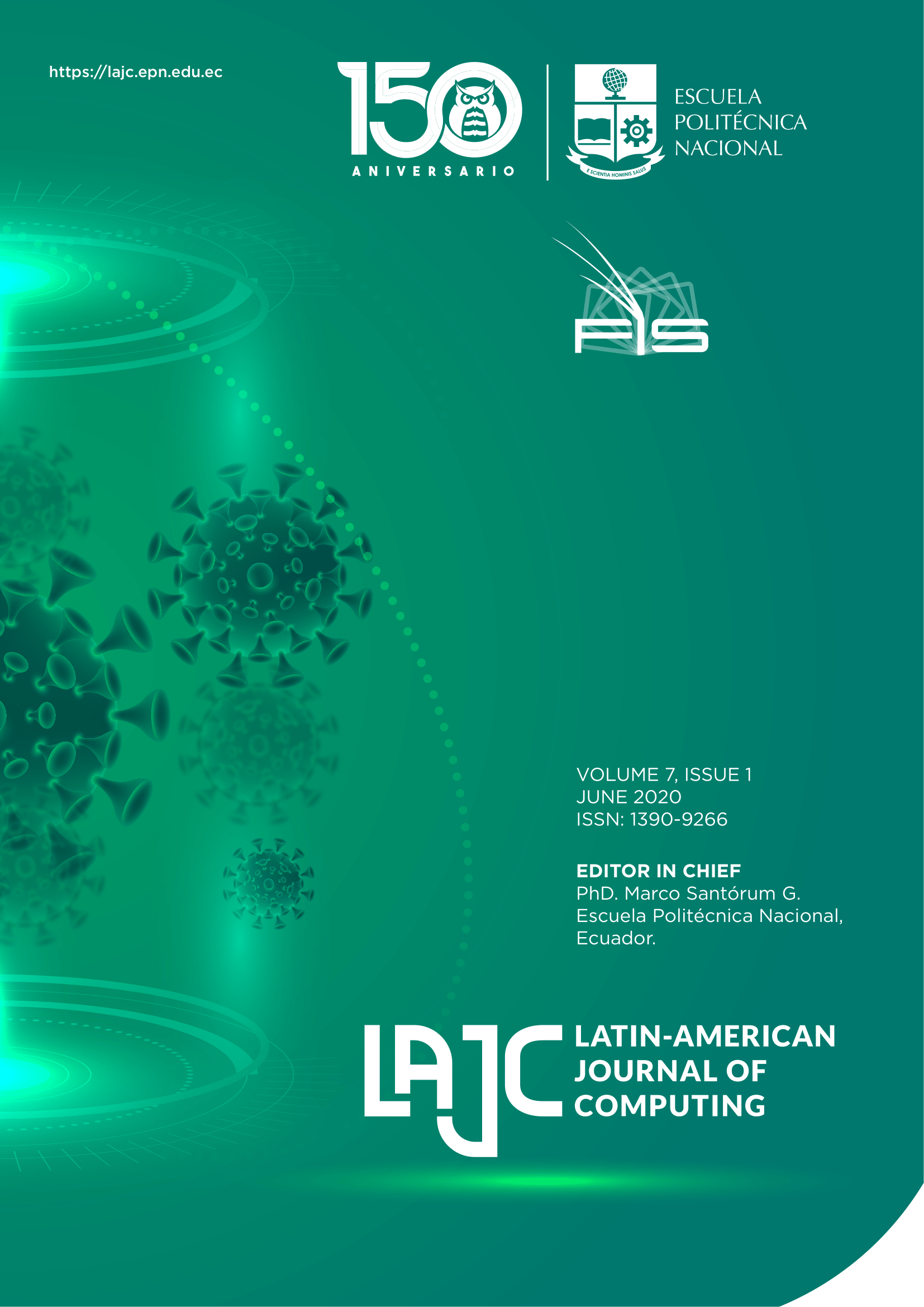Design of a portfolio management software to personalize learning in university environments
Keywords:
elearning, eportfolios, personalizated learning, learning pathsAbstract
This article presents the process of developing eportfolios management software and the results obtained through its use in a subject. The software focuses mainly on personalizing learning in university context. For this, the system takes into account both the different levels of assimilation of knowledge that a student can achieve and indicators that give the teacher a guideline of progress in the learning process. With the work, authors wants to provide support to teachers in the learning process, through the proposal of a learning path to achieve the highest possible levels of learning for a particular student through the use of learning materials adapted to each situation.
Downloads
References
J. Salinas, “La investigación ante los desafíos de los escenarios de aprendizaje futuros,” Revista de Educación a Distancia, vol. 32, pp. 2, 2012.
F. Mödritscher, S. Spiel and V. Garcia-Barrios, “Assessment in E-Learning Environments: A Comparison of three Methods. In C. Crawford et al. (Eds.),” Proceedings of Society for Information Technology & Teacher Education International Conference, Chesapeake, VA: AACE, 2006.
S. Zorrilla Arena, Introducción a la metodología de la investigación, México: Melo S.A, 1993.
D. Lerís and M. L. Sein-Echaluce, “La personalización del aprendizaje: un objetivo del paradigma educativo centrado en el aprendizaje,” ARBOR Ciencia, Pensamiento y Cultura, 2011.
J. Salinas, "La investigación ante los desafíos de los escenarios de aprendizaje futuros," Revista de Educación a Distancia, vol. 32, pp. 11-12, 2012.
J. F. Calderero Hernández, A. M. Aguirre Ocaña, A. Castellanos Sánchez, R. Peris Sirvent y P. Perochena González, “Una nueva aproximación al concepto de educación,” Teoría de la Educación. Educación y Cultura en la Sociedad de la Información, vol. 15, no. 2, pp. 131-151, 2014.
L. Romero, M. Gutierrez and L. Caliusco, “Tecnologías semánticas para la utilización de portfolios como guía de la enseñanza en entornos de educación “ 2018.
E. Barberà, G. Bautista, A. Espasa and T. Guasch, “Portfolio electrónico: desarrollo de competencias profesionales en la Red,” Revista de Universidad y Sociedad del Conocimiento (RUSC), vol. 3, no. 2, 2006.
C. Danielson and L. Abrutyn, Introduction to Using Portfolios in the Classroom, Association for Supervision and Curriculum Development, 1997.
J. Encalada, K. Santiesteban, Y. Portela, S. Cruz and M. Arboleda, “The development of e-Portfolio for Lesson Study” International Conference on Information Systems and Computer Science (INCISCOS), Quito, 2017.
K. Weber and K. Myrick, “Reflecting on Reflecting: Summer Undergraduate Research Students’ Experiences,” International Journal of ePortfolio, vol. 8, no. 1, pp. 13-25, 2018.
J. R. Chittum, “The Theory-to-Practice ePortfolio: An Assignment to Facilitate Motivation and Higher Order Thinking,” International Journal of ePortfolio, vol. 8, no. 1, pp. 27-42, 2018.
E. Collins and R. O'Brien, “Highly Structured ePortfolio Platform for Bachelor of Nursing Students: Lessons Learned in Implementation,” International Journal of ePortfolio, vol. 8, no. 1, pp. 43-55, 2018.
A. Alexiou and F. Paraskeva, “Enhancing self-regulated learning skills through the implementation of an e-portfolio tool,” Procedia - Social and Behavioral Sciences, vol. 2, no. 2, pp. 3048-3054, 2010.
P. Peres, L. Oliveira, A. Jesus and A. Silva, “Designing learning paths: Contributions to the organization of b-learning initiatives,” 2th Iberian Conference on Information Systems and Technologies (CISTI), Lisbon, 2017, pp. 1-6.
L. Romero, M. Gutierrez and L. Caliusco, “Modelado conceptual de caminos de aprendizaje basados en portfolios: Estrategias de selección de recursos educativos,” 2018, pp. 1-6.
W. Meeus, F. Questier and T. Derks, “Open source eportfolio: development and implementation of an institution-wide electronic portfolio platform for students,” Educational Media International, vol. 43, no. 2, pp. 133-145, 2006.
R. Grangel, C. Campos, C. Rebollo, I. Remolar and S. Palomero, “Metodología para seleccionar tecnologías Web 2.0 para la docencia,” Actas Simposio-Taller JENUI, Ciudad Real, 2012.
R. Grangel, C. Campos, V. Verde and C. Rebollo, “Aprender a aprender estudiando Ingeniería del Software,” XVI Jornadas de Enseñanza Universitaria de la Informática, 2010.
I. Sommerville, Ingeniería del Software, vol. 9, Pearson Educación, S.A., 2012.
R. S. Pressman, Ingeniería del Software. Un enfoque práctico, vol. 7, McGRAW-HILL, Inc., 2010.
C. Larman, UML y Patrones. Introducción al análisis y diseño orientado a objetos, Pearson Educación, S.A., 2003.
I. Sommerville, “Ingeniería del Software,” vol. 9, Pearson Educación, S.A., 2012, pp. 331-353.
Google, “Google Trends,” [Online]. Available: https://trends.google.com/trends/explore. [Accessed: Nov. 22, 2018].
J. Heumann, Generating test cases from use cases, The rational edge, 2001.
Downloads
Published
Issue
Section
License
Copyright Notice
Authors who publish this journal agree to the following terms:
- Authors retain copyright and grant the journal right of first publication with the work simultaneously licensed under a Creative Commons Attribution-Non-Commercial-Share-Alike 4.0 International 4.0 that allows others to share the work with an acknowledgement of the work's authorship and initial publication in this journal.
- Authors are able to enter into separate, additional contractual arrangements for the non-exclusive distribution of the journal's published version of the work (e.g., post it to an institutional repository or publish it in a book), with an acknowledgement of its initial publication in this journal.
- Authors are permitted and encouraged to post their work online (e.g., in institutional repositories or on their website) prior to and during the submission process, as it can lead to productive exchanges, as well as earlier and greater citation of published work.
Disclaimer
LAJC in no event shall be liable for any direct, indirect, incidental, punitive, or consequential copyright infringement claims related to articles that have been submitted for evaluation, or published in any issue of this journal. Find out more in our Disclaimer Notice.










